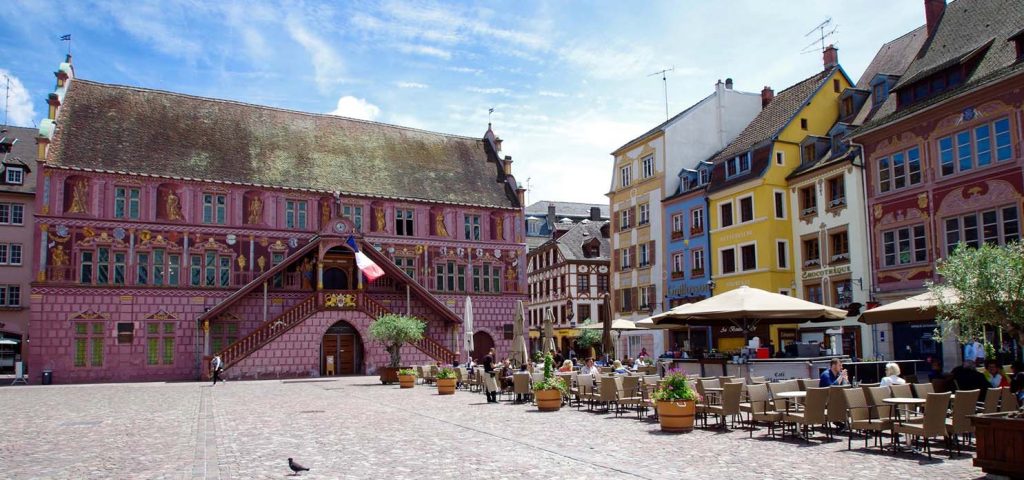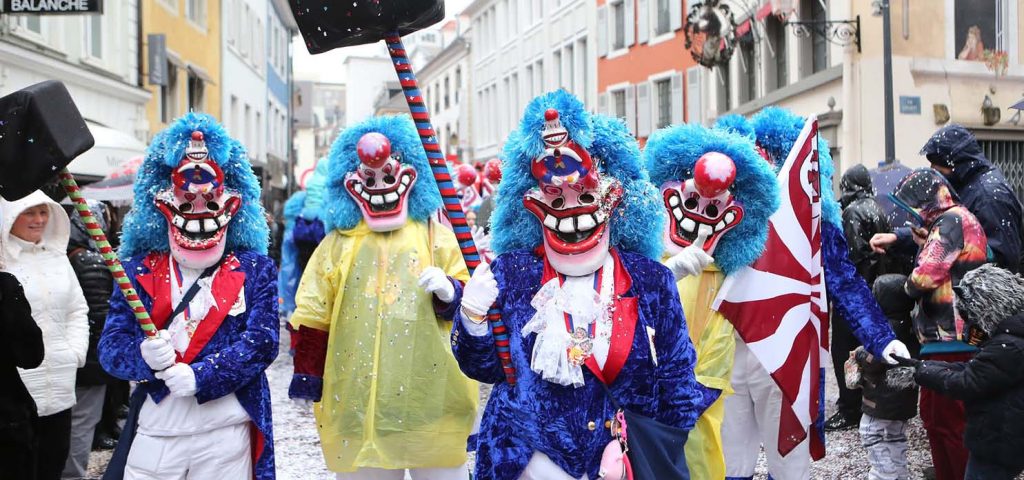As I set foot in the picturesque town of Mulhouse, nestled in the heart of Alsace, I was immediately struck by its unique blend of French and German influences. Alsace, with its rich history, captivating architecture, and delectable cuisine, is a region where tradition and culture are deeply cherished. To ensure a memorable and respectful visit to this enchanting part of France, it’s essential to embrace the local customs and etiquettes. I’ll take you through the nuances of Alsace’s social norms, allowing you to navigate Mulhouse with ease while immersing yourself in the local way of life.
Greetings and Politeness: Bonjour
In Alsace, greetings hold significant importance. The art of greeting begins with a friendly “Bonjour” (hello) when you enter a shop, restaurant, or any place of business. Taking it a step further, you can address someone with respect by saying “Bonjour, Madame” or “Bonjour, Monsieur.”
When it’s time to part ways, saying “Au revoir” (goodbye) or “Bonne journée” (have a good day) is customary. These polite salutations are the foundation of good manners in the region and go a long way in showing your appreciation for Alsace’s culture.
Greetings with Kisses: La Bise
In Alsace, as in many parts of France, cheek-kissing (known as “la bise”) is a common form of greeting. However, the number of kisses exchanged and the side to start on can vary. I found that it’s best to follow the lead of the locals or use a simple handshake if unsure. It’s a charming way to greet both friends and acquaintances.
The Value of Punctuality
In Alsace, punctuality is a virtue. Whether you have a reservation at a restaurant or an appointment to attend, arriving on time is a sign of respect. Being punctual not only shows courtesy to others but also reflects positively on your character.
Dining Etiquette: Savoring the Flavors
Exploring the culinary delights of Alsace is a journey in itself. Dining out comes with its own set of etiquettes:
- Napkin Use: Begin by placing your napkin on your lap upon seating, and keep it there throughout the meal. Only put it back on the table when you’ve finished your dining experience.
- Cutlery Mastery: Alsace takes pride in its gastronomy, so it’s essential to master the art of cutlery usage. Start with the outermost utensils and work your way in as the courses progress. The fork is usually held in the left hand, while the knife is held in the right while cutting.
- Wine Pairing: Alsace is renowned for its wines, particularly varieties like Riesling and Gewürztraminer. Don’t hesitate to ask for wine recommendations to complement your meal. Your server will be delighted to assist.
- Tipping: While service charges are often included in the bill, it’s customary to round up the total or leave a small tip as a gesture of appreciation for exceptional service.
Here are some additional tips for a gracious dining experience:
- Bread Etiquette: I quickly learned that placing a piece of bread on the table, not on your plate, is customary. Tear off small portions to enjoy with your meal, savoring the delightful flavors.
- Toast with Eye Contact: Making a toast during a meal is a common practice in Alsace. It’s important to maintain eye contact with the person you’re toasting. It’s a sign of sincerity and goodwill, adding warmth to the dining experience.
- Gift Giving: If you’re fortunate enough to be invited to someone’s home for a meal, bringing a small gift is a thoughtful gesture. During my visit, I was presented with a bottle of local wine to my gracious hosts.
- Respect for Courses: Alsacians often follow a multi-course meal structure. I observed that it’s polite to wait until all courses have been served before beginning to eat. This practice encourages a leisurely pace and allows everyone to enjoy each course fully.
Speaking the Language
French is the predominant language in Alsace, but many locals also speak Alsatian, a unique Germanic dialect that reflects the region’s historical ties to Germany. Learning a few basic phrases like “Hallo” (hello) and “Merci” (thank you) in Alsatian can earn you the goodwill of the locals.During my stay, I made an effort to learn a few Alsatian phrases, which endeared me to the locals. Phrases like “Wàs màcht’s?” (similar to “How are you?”) allowed me to connect more deeply with the community.
Sundays: A Day of Rest

Sundays in Alsace are typically reserved for rest and family gatherings. As such, many shops, restaurants, and businesses may have limited hours or be closed entirely. It’s advisable to plan your activities and meals accordingly to avoid any inconveniences.I embraced this day as an opportunity to enjoy a leisurely meal with loved ones and explore the beautiful Alsace countryside.
Dressing Modestly
Mulhouse is a modern city, but it’s respectful to dress modestly when visiting places of worship or attending formal events. In churches, covering your shoulders and knees is considered appropriate.If you decide to attend a church service in Alsace, I recommend respecting the religious customs and traditions. Dressing modestly and quietly observing the proceedings is appreciated by the congregation. It’s a chance to witness the deep-rooted faith and reverence of the local community.
Respect Cultural Sites
When visiting cultural sites, such as museums, castles, or historical landmarks, always respect the rules and regulations posted. Some places may prohibit photography or have specific guidelines for visitor conduct.
The Art of Queuing
Queuing, or waiting in line, is a fundamental aspect of polite behavior in Alsace. Whether you’re waiting for public transport, ordering food, or entering a venue, make sure to queue up in an orderly fashion. Cutting in line is generally frowned upon.
Festivals and Celebrations: Joining the Revelry
While Alsace is a destination brimming with cultural experiences, it truly comes to life during its vibrant festivals and celebrations. The atmosphere during these events is electric, and they offer a unique opportunity to immerse yourself in the local customs and traditions.
Fête de l’Ill: Celebrating the River
This event typically takes place in early July and is a true spectacle.
Date: Early July
Location: Along the banks of the Ill River, Mulhouse
As the sun dipped below the horizon, the Ill River became a stage for boat parades, each illuminated vessel more enchanting than the last. The sparkling reflections on the water added an ethereal touch to the night. Alongside the river, the streets came alive with lively concerts featuring local musicians. Their melodies filled the air, and it was impossible not to tap your feet to the rhythm.
The grand finale of the Fête de l’Ill was a breathtaking fireworks display that painted the night sky with vivid colors. The crowd gasped and cheered in unison as the bursts of light created a dazzling spectacle. It was a magical moment that perfectly encapsulated the Alsacian spirit and their deep connection to their rivers.
Carnival: A Riot of Colors and Joy

Alsace boasts a lively Carnival tradition.The Carnival of Mulhouse is a riot of colors, laughter, and exuberance that captivates both locals and visitors.
Date: Typically in February or March
Location: Streets of Mulhouse
During the Carnival, the streets of Mulhouse are transformed into a kaleidoscope of costumes and masks. Marching bands filled the air with music, and the sound of laughter echoed off the cobblestone streets.Families, friends, and strangers came together to celebrate, sharing a sense of joy and unity.
Christmas Markets: A Magical Winter Wonderland
These markets, which commence as early as late November, are a testament to the region’s festive spirit.
Date: Late November to December
Locations: Various towns and cities across Alsace, including Mulhouse
The stalls were adorned with intricate, handmade crafts that showcased the artisans’ skills and dedication. One of the most heartwarming aspects of the Christmas markets was the presence of carolers. Their harmonious voices filled the streets with melodies, creating an atmosphere of joy and togetherness. The locals and visitors, young and old, gathered around to sing along and share the holiday spirit.
The Alsacian Christmas markets are not just places to shop; they are immersive experiences that capture the essence of the season. The sense of community and celebration is palpable, and it’s impossible not to be swept up in the magic of the moment.
Easter Markets: A Springtime Extravaganza
If you’re visiting Alsace in the spring, don’t miss the Easter markets that pop up across the region. These markets are a delightful celebration of the season and the approach of Easter.
Date: Typically in the weeks leading up to Easter
Locations: Various towns and villages in Alsace
The Easter markets are a riot of color, with stalls brimming with beautifully decorated eggs, fresh spring flowers, and handmade crafts. It’s a visual feast that reflects the renewal of life that spring brings.
One of the highlights of these markets is the intricate Easter egg displays. Artisans painstakingly create elaborate egg decorations, some of which are true works of art. It’s a tradition that showcases the craftsmanship and creativity of the Alsacian people.
Harvest Festivals: Celebrating Nature’s Bounty
Autumn in Alsace brings with it a bountiful harvest, and the region celebrates this abundance with a series of charming harvest festivals.
Date: Typically in September and October
Locations: Various towns and villages in Alsace
The harvest festivals are a sensory delight. You’ll find stalls laden with fresh produce, from plump grapes to crisp apples. It’s the perfect time to sample the region’s wines, cheeses, and other delectable treats.One of the most unique aspects of these festivals is the grape harvest, where locals and visitors alike can participate in picking grapes in the vineyards. It’s a hands-on experience that connects you with the land and the people who call it home.
Market Haggling: Polite Bargaining
During my visits to local markets, I observed that bargaining is generally not common practice in Alsace. Prices are typically fixed, and attempting to haggle may be seen as disrespectful. Instead, I engaged in friendly conversations with vendors, inquiring about their products and learning about their craft. It was a wonderful way to connect with artisans and gain insights into their work.
Offering Assistance: Lending a Hand
One of the most heartwarming aspects of my time in Alsace was the willingness of locals to offer assistance to one another and to visitors. Whether it was helping with directions, offering a seat on public transportation, or assisting someone with their bags, these small acts of kindness were a testament to the warmth and hospitality of the people of Alsace. I, too, had the pleasure of offering my help and felt like a welcomed guest in this beautiful region.
By keeping these local customs and etiquettes in mind, not only did I blend in seamlessly, but I also gained a deeper understanding and appreciation of Alsace’s rich culture and traditions. My travels in this enchanting region were enriched by these experiences, and I hope you find them equally valuable during your visit to Alsace. Enjoy your journey and the warmth of the Alsacian hospitality.
